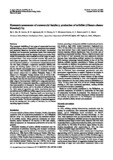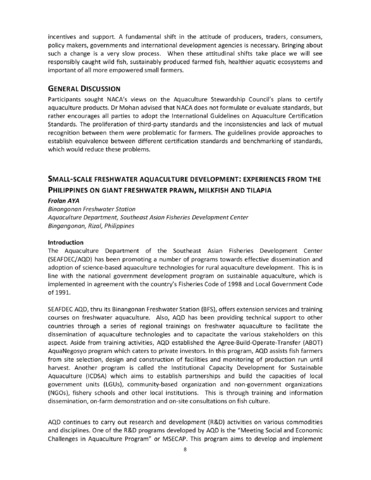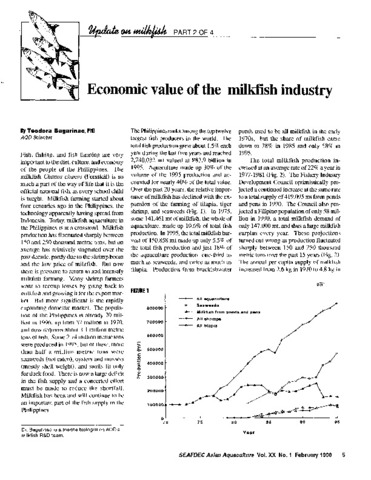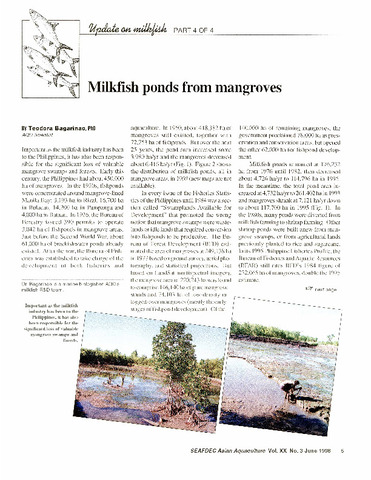Economic assessment of commercial hatchery production of milkfish (Chanos chanos Forsskal) fry
Share
Abstract
The economic viabilities of two types of commercial hatchery milkfish (Chanos chanos) fry operations were assessed and compared. Based on the actual cost of input, the physical facilities, and the potential production yields, four commercial hatcheries previously used for shrimp (Penaeus monodon fry production were classified as either largeor smallscale operations. Cost-return analysis revealed high profits for both types of operation. The return on investment (54-61 %) and the payback period ( approximately 1.5 years) were comparable between the two types, although a large-scale operation (476 %) had double the working capital return of a small-scale hatchery (221 %). Benefit-cost analysis over a 5-year period also revealed positive and above-baseline discounted economic indicators [net current value = 0.2-2.2 million Philippine Pesos (1 US Dollar = 25 Philippine Pesos); internal rate of return = 88-107 %]. The net benefit-cost ratio of a large-scale operation (2.0) was higher than that of a small-scale hatchery (1.4), suggesting a slight edge in the investment viability of a large-scale hatchery. Compared with a large-scale operation, a small-scale hatchery was more sensitive to changes in the acquisition price of eggs or newly-hatched larvae and in the price of selling hatchery fry. Both types of operation are viable nonetheless when the acquisition cost is P6000 per million eggs or larvae and hatchery fry are sold at P0.50 each. Together, profit and investment in milkfish hatchery fry production appear viable, making milkfish an alternative commodity for production in many abandoned shrimp hatcheries. The limited availability of spawned eggs and larvae for rearing and the quality of hatchery fry are issues requiring urgent attention.
Suggested Citation
Garcia, L. M., Agbayani, R. F., Duray, M. N., Hilomen-Garcia, G. V., Emata, A. C., & Marte, C. L. (1999). Economic assessment of commercial hatchery production of milkfish (Chanos chanos Forsskal) fry. Journal of Applied Ichthyology , 15(2), 70-74. https://doi.org/10.1046/j.1439-0426.1999.00094.x
Taxonomic term
Collections
- AQD Journal Articles [1249]
Related items
Showing items related by title, author, creator and subject.
-
Small-scale freshwater aquaculture development: Experiences from the Philippines on giant freshwater prawn, milkfish and tilapia
Aya, Frolan (Japan International Cooperation Agency, 2013-12)The Aquaculture Department of the Southeast Asian Fisheries Development Center (SEAFDEC/AQD) has been promoting a number of programs towards effective dissemination and adoption of science-based aquaculture technologies ... -
Economic value of the milkfish industry
Bagarinao, Teodora (Aquaculture Department, Southeast Asian Fisheries Development Center, 1998)A brief description is given of the milkfish (Chanos chanos) farming industry in the Philippines. Over the past 20 years, the relative importance of milkfish has declined with the expansion of tilapia, tiger shrimp and ... -
Milkfish ponds from mangroves
Bagarinao, Teodora (Aquaculture Department, Southeast Asian Fisheries Development Center, 1998)




